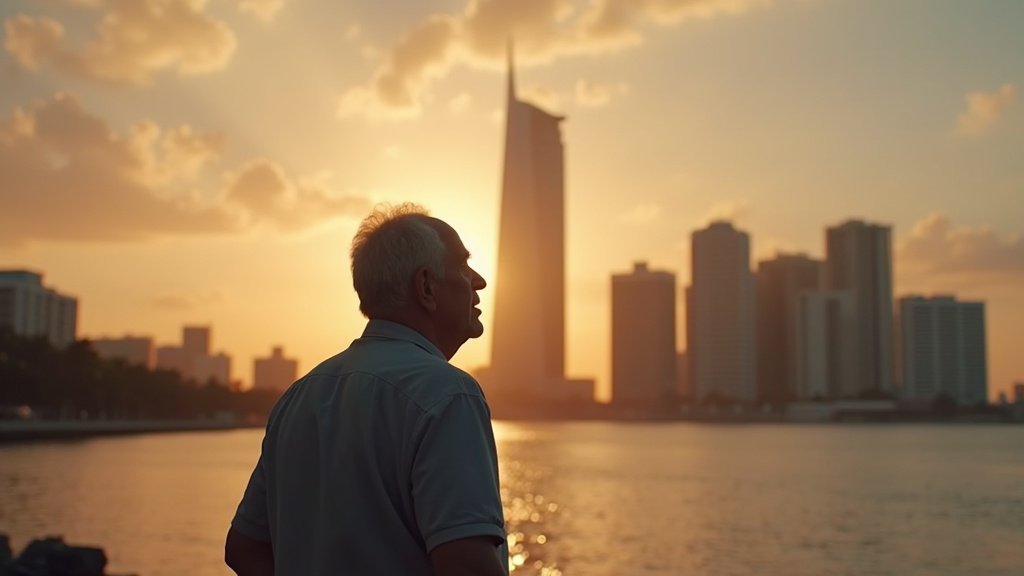In the heart of Miami stands an architectural sentinel, a building that transcends its physical form to embody the very spirit of a city built on hope and new beginnings. For countless families seeking refuge and a fresh start, this edifice, known today as the Freedom Tower, has long been far more than just a structure; it is a profound symbol, often referred to as Miami’s very own “Statue of Liberty.”
This powerful sentiment is eloquently articulated by Leslie Pantín, a revered Cuban exile and former Miami Dade College board member, whose personal journey mirrors that of so many others who passed through its hallowed halls. Pantín’s reflections underscore the immense symbolic importance of the Freedom Tower, presenting a compelling argument for its enduring relevance in the cultural and historical landscape of South Florida. His perspective, a cornerstone of much public discourse and news commentary, casts the tower as a beacon representing opportunity, resilience, and an unwavering sense of community, particularly for Cuban families like his own who found solace and a new life within sight of its formidable spire.
A Personal Testament to Enduring Hope
Leslie Pantín’s voice resonates with the authentic experience of a generation. As a Cuban exile, his personal history is inextricably linked to the tower, giving his reflections an unparalleled depth of feeling. For Pantín and countless others, the Freedom Tower wasn’t merely a point of arrival; it was the tangible manifestation of opportunity knocking on the shores of a new land. It symbolized the chance to rebuild lives shattered by political upheaval, to forge a future where freedoms once denied could flourish.
More than just opportunity, the tower became a testament to resilience. It witnessed the quiet strength of families determined to overcome adversity, to adapt to an unfamiliar culture, and to build something lasting from the ashes of their past. This collective resilience forged an unbreakable sense of community among those who shared the experience of displacement and rebirth. The tower, therefore, isn’t just a monument to a historical event; it is a living symbol of the indomitable human spirit, a narrative that has shaped much of Miami’s unique identity.
Pantín’s own family journey through this portal to a new beginning adds a poignant layer to his advocacy. His personal connection amplifies the universal truth that for many, the Freedom Tower was the physical embodiment of their escape from tyranny and their embrace of liberty. It was here, at this very nexus, that new lives began, dreams were rekindled, and the foundational stones of a vibrant diaspora were laid.
The Tower’s Storied Past as a Refuge
To understand the profound resonance of Pantín’s words, one must delve into the Freedom Tower’s storied past, particularly its pivotal role as the Cuban Refugee Center. From the early 1960s to the mid-1970s, this building served as the central processing point for hundreds of thousands of Cuban exiles fleeing Fidel Castro’s communist regime. It was a place of first contact for many, where federal agencies provided aid, medical care, and assistance with resettlement for those arriving in waves, often with nothing but the clothes on their backs and the hope in their hearts.
Imagine the scene: families, often separated and weary from their journey, gathered beneath its iconic tower, waiting for processing, for news of loved ones, for the first glimpse of the bureaucratic steps that would lead them to a new life. It was a place charged with both apprehension and immense hope. For the Cuban community, the tower became the unofficial Ellis Island of Miami, a symbol of transition from the old world to the new. It bore witness to countless reunions, the raw emotion of fresh starts, and the quiet dignity of a people determined to preserve their culture while embracing a different future. This historical function cements its place not just in local news archives, but in the collective memory of an entire people.
From Archive to Dynamic Museum
The narrative of the Freedom Tower is not static; it is one of evolution and continued purpose. In recent years, the tower has undergone a significant and thoughtful transformation into a dynamic museum. No longer solely a relic of the past, it has been revitalized to engage with the present and educate for the future. This transformation reflects a modern understanding of historical preservation, where a museum becomes an active participant in community life rather than a passive repository of artifacts.
The dynamic nature of the museum implies a space that fosters ongoing dialogue, hosting exhibitions that explore not only the Cuban exile experience but also broader themes of immigration, human rights, and the American dream. It serves as a living classroom, inviting younger generations, many of whom are descendants of those first exiles, to connect with their heritage and understand the sacrifices made. This modern iteration ensures that the tower continues its mission as a beacon – not just for those who arrived seeking refuge, but for all who seek to understand the rich tapestry of Miami’s history and the universal human quest for freedom and a better life.
Preserving a Legacy for Future Generations
It is against this backdrop of historical significance and modern relevance that Leslie Pantín passionately advocates for the Freedom Tower’s continued preservation. His plea is not simply for the upkeep of an old building, but for the safeguarding of a profound legacy. He sees its preservation as critical for honoring the past – ensuring that the sacrifices, struggles, and triumphs of those who passed through its doors are never forgotten. It is a tangible link to a pivotal era that shaped Miami and, indeed, played a role in the broader American narrative.
Furthermore, Pantín stresses its importance in guiding future generations. The tower, as a preserved historical site and active museum, offers invaluable lessons in resilience, the pursuit of liberty, and the building of community. It serves as a reminder of where Miami came from, the values that underpin its unique character, and the enduring power of hope in the face of adversity. In an ever-changing world, such anchors to shared history become even more vital, providing context and inspiration for those who will shape tomorrow.
The Freedom Tower, in its capacity as Miami’s ‘Statue of Liberty,’ represents an ongoing story, one that continues to unfold in the news and daily lives of its citizens. Its preservation is not merely an act of remembrance but an investment in the future, ensuring that the light it casts on opportunity, resilience, and community continues to shine brightly for countless generations to come.





